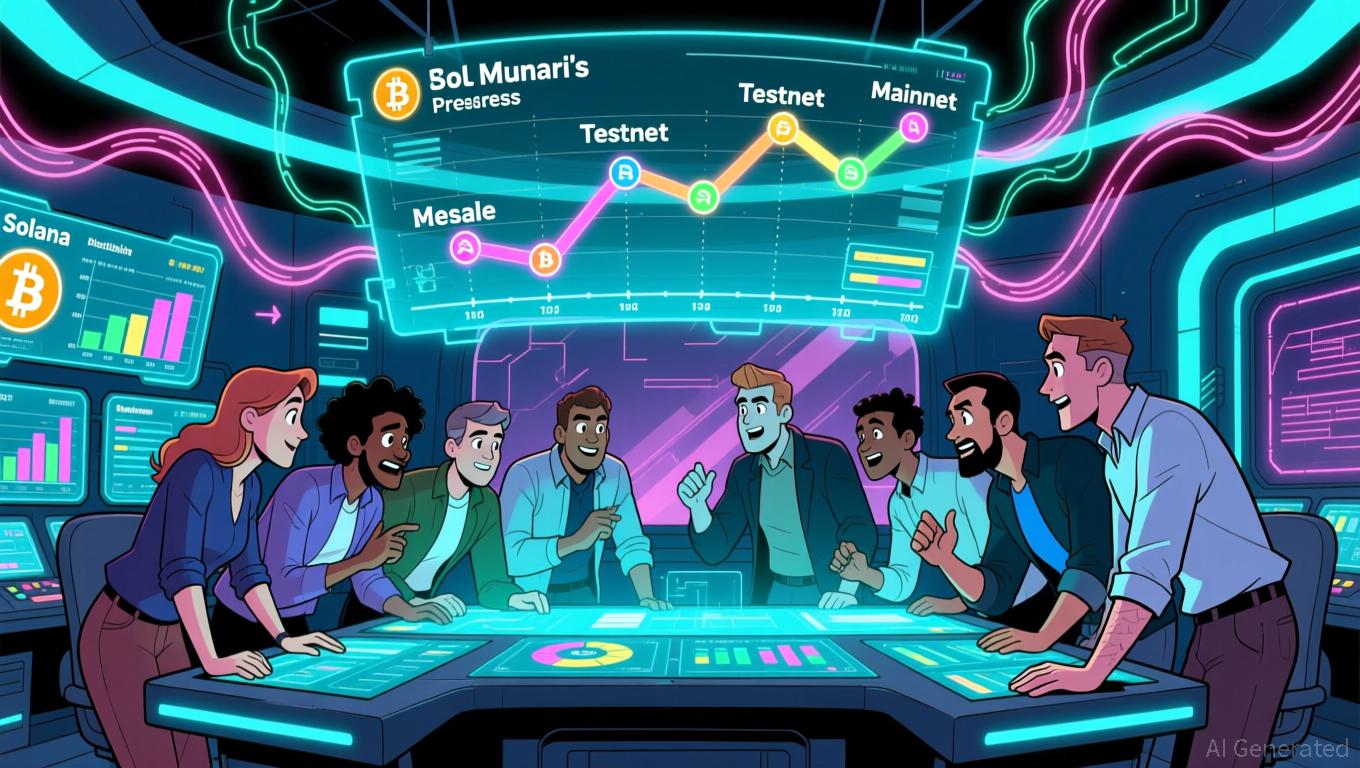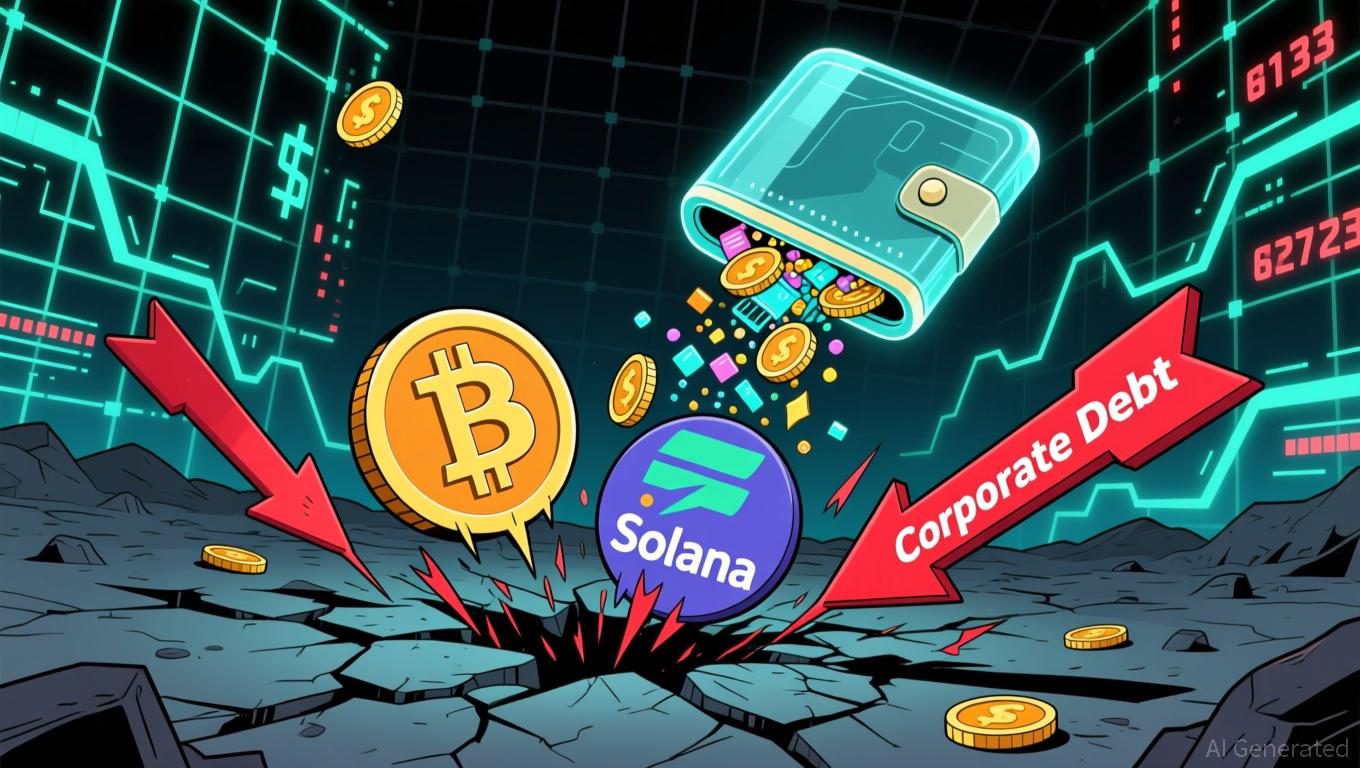COAI Token Fraud: An Urgent Reminder for Developing Token Markets and the Importance of Thorough Investor Research
- COAI token's 2025 collapse exposed systemic risks in token economies, highlighting governance failures and regulatory gaps. - Weak oversight in emerging markets enables crypto fraud, with Southeast Asia reporting $10B annual losses from organized scams. - U.S. CLARITY Act's ambiguity over AI tokens creates legal gray areas, while MiCAR and GENIUS Act aim to clarify global regulatory frameworks. - Investors must adopt blockchain forensics and multi-layer due diligence to address vulnerabilities in tokenom
Systemic Risks in Emerging Token Economies
The downfall of COAI was not an isolated incident, but rather a reflection of widespread structural issues within token economies, especially in developing regions.
Technical flaws only add to these dangers.
Southeast Asia has become a center for crypto-related scams, with organized crime groups in Myanmar and Cambodia reportedly stealing around $10 billion each year. These schemes, which often use advanced social engineering and operate through unregulated exchanges, take advantage of weak enforcement and regulatory gaps. The case of She Zhijiang, a notorious scammer based in Myanmar, shows that even when individual fraud rings are dismantled, broader problems like complicit ISPs and lax regulation persist. These issues highlight the need for global cooperation to close regulatory loopholes and enforce stricter checks on international transactions.
Investor Due Diligence: A New Imperative
The COAI crisis has compelled investors to rethink their approach to vetting token investments.
Regulators such as FINRA have stressed the necessity of thorough due diligence, especially for token offerings that are not registered.
Yet, due diligence goes beyond technical checks. It requires a shift toward greater openness and responsibility. Projects like ZEUSNFTX, which seek to restore confidence in DeFi and NFT markets, demonstrate the promise of scalable blockchain technology—but only if they implement strong governance and compliance practices. Investors should also focus on anti-money laundering (AML) procedures, including global sanctions checks and regular reviews of Politically Exposed Persons (PEP).
The Path Forward: Regulatory Clarity and Global Coordination
The COAI token scandal has exposed the shortcomings of existing regulatory systems.
For investors, the takeaway is unmistakable: due diligence must expand beyond standard financial reviews to include blockchain analysis, real-time transaction tracking, and smart contract evaluations. As the COAI episode shows, even advanced projects can unravel due to governance lapses and regulatory uncertainty.
Ultimately, the sustainability of token economies hinges on striking the right balance between innovation and regulation. Without consistent rules and diligent investor scrutiny, another COAI-like collapse is not a matter of if, but when.
Disclaimer: The content of this article solely reflects the author's opinion and does not represent the platform in any capacity. This article is not intended to serve as a reference for making investment decisions.
You may also like
Bitcoin News Update: Innovative Tokenomics and Interoperable Cross-Chain Features: The Key to Altcoin Success in 2025
- 2025 altcoin market highlights Bitcoin Munari (BTCM), XRP Tundra, and Mutuum Finance (MUTM) leveraging multi-chain infrastructure and structured presales. - BTCM's fixed-supply model ($0.35 presale) and Solana-based SPL token deployment aim for 2027 Layer-1 migration with EVM compatibility and privacy features. - XRP Tundra offers cross-chain yield via dual-token system (TUNDRA-S/X) with $0.214 Phase 12 pricing and audited Cryo Vaults for Bitcoin holders. - Mutuum Finance (MUTM) nears 99% Phase 6 allocat

Bitcoin Updates: Institutional Funds Move: AI ETFs Gain Momentum Amid Growing Crypto Debt Issues
- Bitcoin and Solana face renewed selling pressure as digital asset treasury companies (DATCos) offload holdings amid $42.7B corporate debt inflows into crypto. - DATCos, underwater on $126K Bitcoin peak investments, approach parity in market-to-net-asset-value ratios, triggering 40% Solana treasury value declines since October. - Institutional capital shifts toward AI ETFs (e.g., Global X AI ETF) as firms prioritize AI infrastructure investments over crypto, linking performance to tech stock volatility. -

Fed Policy Split Drives Derivatives Activity as Crypto Teeters on Brink of Easing
- Fed policy uncertainty drives derivatives bets, with CME FedWatch pricing 69.7% chance of 25-bp December rate cut amid mixed inflation and labor data. - Crypto markets anticipate easing cycle, but remain fragile as Crypto Fear & Greed Index hits "extreme fear" level 14 despite Coinbase's bearish odds assessment. - Crude oil drops on U.S. Ukraine peace plan and OPEC output hike, while dollar strength compounds risks for rate-cut-sensitive commodities. - CME Group faces scrutiny after $2M insider sale, yet

Modern Monetary Theory and the Valuation of Cryptocurrencies: Do MMT Principles Support Rapid Increases in Token Prices?
- 2025 analysis explores whether Modern Monetary Theory (MMT) can justify Momentum (MMT) token's 1,300% price surge. - Token's rise stems from Binance airdrops, U.S./EU regulatory clarity, and institutional investment, not MMT principles. - Academic research highlights crypto valuation duality: network effects coexist with speculative behavior driven by heterogeneous expectations. - MMT influences macroeconomic frameworks (CBDCs, fiscal policy) but fails to predict token-specific surges dominated by retail